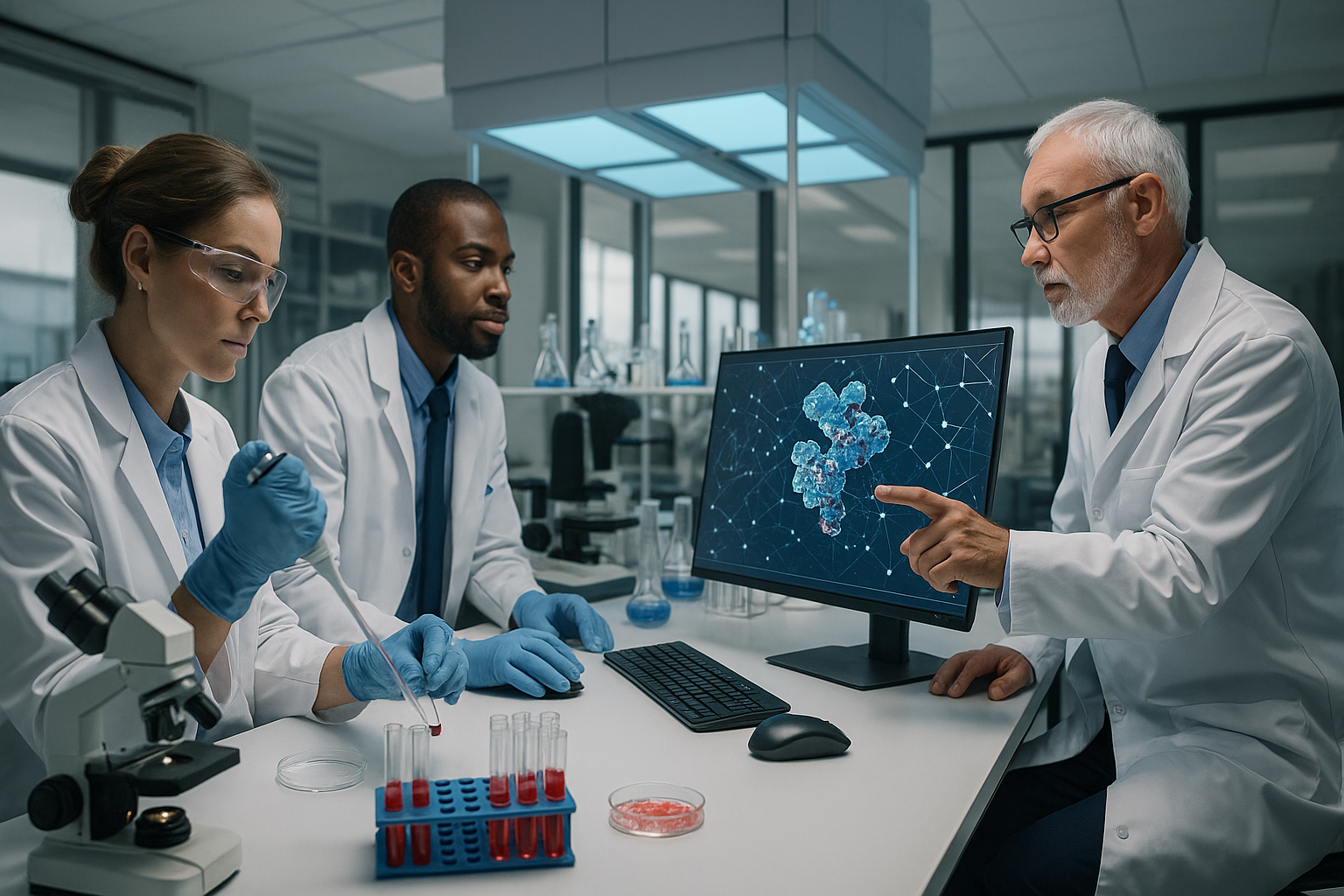From Code to Cure: Generative AI’s Role in Drug Discovery and Protein Engineering
This review explores how generative AI, through models like VAEs, GANs, transformers, and diffusion networks is revolutionizing drug discovery and protein design by accelerating molecule generation, docking, and validation. It highlights real-world successes, personalized medicine advances, and the emerging potential for autonomous, AI-driven molecular science.

In a landmark review from Jawaharlal Nehru University, New Delhi, researcher Uddalak Das maps out the dramatic evolution of drug discovery and protein design through the lens of generative artificial intelligence (AI). As institutes like Exscientia, Insilico Medicine, and AbSci lead the charge, AI is proving capable of transforming a field long plagued by inefficiency. Traditional drug development often spans over a decade and costs upwards of $2 billion per drug, with failure rates in clinical trials soaring above 90%. Generative AI is upending this paradigm, enabling scientists to rapidly explore vast chemical and proteomic spaces, design novel compounds, and predict key pharmacological properties with precision. By leveraging powerful machine learning models, AI-driven discovery compresses timelines, slashes costs, and opens new frontiers in personalized and precision medicine.
Inside the AI Toolbox: VAEs, GANs, Transformers, and Diffusion Models
At the heart of this revolution lie four main classes of generative models. Variational Autoencoders (VAEs) build a continuous latent space where chemical analogs can be smoothly interpolated, enabling property-optimized molecule generation. Though early VAEs struggled with chemical validity, innovations like the Junction Tree VAE now ensure outputs obey fundamental structural rules. Generative Adversarial Networks (GANs), which employ a generator-discriminator framework, have proven adept at generating realistic molecular structures. Tools like ORGAN and MolGAN demonstrate how adversarial learning can tailor molecules to desired pharmacological properties. Transformers, borrowed from natural language processing, treat SMILES or amino acid sequences like language. Models such as ChemBERTa and ProGen generate molecules and proteins token by token, some folding into experimentally verified functional structures. Most recently, denoising diffusion probabilistic models (DDPMs) have emerged as a powerhouse for high-fidelity molecular generation. DiffDock, a flagship diffusion-based tool, can outperform classical docking algorithms by learning binding poses from noisy initial configurations and refining them into plausible 3D structures.
Drug Design, Reinvented: Molecules, Proteins, and Antibodies
Generative AI is not limited to theory, it is actively being used to develop novel drug candidates. In small molecule design, transformer-based models pre-trained through self-supervised learning extract rich molecular representations, while reinforcement learning methods like ReLeaSE optimize for multi-objective goals such as potency, safety, and synthesizability. DeepScaffold, a graph-based generator, creates molecules by modifying or replacing chemical fragments, adhering to medicinal chemistry heuristics. For protein design, diffusion models like RFdiffusion and FrameDiff generate functional scaffolds from scratch. These models have successfully produced enzymes capable of catalyzing non-natural reactions, as well as antibodies that bind with high affinity to viral and immune checkpoint targets. Real-world results validate this approach, AI-designed proteins have been shown to express robustly in bacterial hosts, retain function across variable conditions, and adopt stable 3D conformations confirmed by cryo-EM and crystallography.
Virtual Screening, Retrosynthesis, and Pharmacokinetics at AI Speed
AI is now enhancing every phase of the drug development pipeline, from virtual screening and docking to synthesis planning and toxicity prediction. DiffDock reimagines docking by using diffusion models to simulate ligand binding poses, outperforming tools like AutoDock Vina and GNINA in both accuracy and flexibility. Graph neural networks also predict protein–ligand binding affinities with remarkable precision, supporting large-scale in silico screening campaigns. With chemical libraries surpassing a billion compounds, AI filters and ranks candidates in minutes. On the synthetic chemistry side, transformer-based models suggest retrosynthetic routes with confidence scores, while reinforcement learning agents use Monte Carlo Tree Search to prune inefficient reaction pathways. Once a synthetic route is selected, Bayesian optimization algorithms fine-tune reaction conditions to maximize yield and minimize cost. Meanwhile, AI models assess absorption, distribution, metabolism, excretion, and toxicity (ADMET) profiles, identifying risks like hERG inhibition or CYP450 interaction before a molecule ever touches a test tube.
Personalization, Experimental Validation, and the Road to Autonomy
Beyond general-purpose drug design, AI is paving the way for truly personalized medicine. By integrating genomic, transcriptomic, and proteomic data, generative models can tailor molecules to specific patient subpopulations or tumor profiles. This has led to AI-designed neoantigen vaccines, tumor-specific enzyme inhibitors, and therapies optimized for rare mutations. Experimental validation is closing the loop between digital models and physical reality. Notable success stories include DSP-1181 (a GPCR-targeting compound designed by Exscientia) and Insilico Medicine’s fibrosis drug, both of which entered Phase I trials in record time. De novo antibodies generated by AbSci have also progressed toward therapeutic application. However, not all candidates succeed, some face challenges like poor synthesis routes, unexpected toxicity, or incorrect binding poses. To address this, researchers embrace an iterative model-test-refine cycle, assisted by AI-controlled robotics and automated synthesis platforms. Looking ahead, Das envisions a future where AI not only proposes but autonomously tests and improves its hypotheses. Integrating quantum computing into this workflow could further refine electronic property prediction and reaction simulation. Still, ethical concerns loom large: AI must be regulated to prevent the generation of harmful compounds and ensure equitable access to personalized therapies. With responsible oversight and continued innovation, generative AI stands poised to reshape the future of medicine, engineering not just molecules, but entire paradigms of discovery.
- FIRST PUBLISHED IN:
- Devdiscourse
ALSO READ
Generative AI tools reshape propaganda, fact-checking and public manipulation
Student engagement rises with generative AI, but risks of overreliance loom
Generative AI fuels sophisticated cyberattacks, putting users and businesses at risk
Generative AI fuels false narratives, undermining public trust in democratic systems
Uniqus Consultech and Portal26 Forge Alliance to Harness Generative AI










